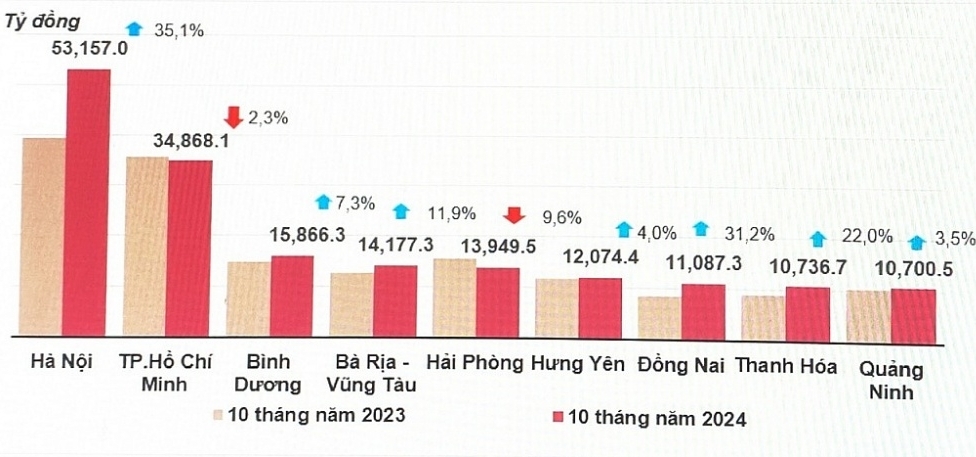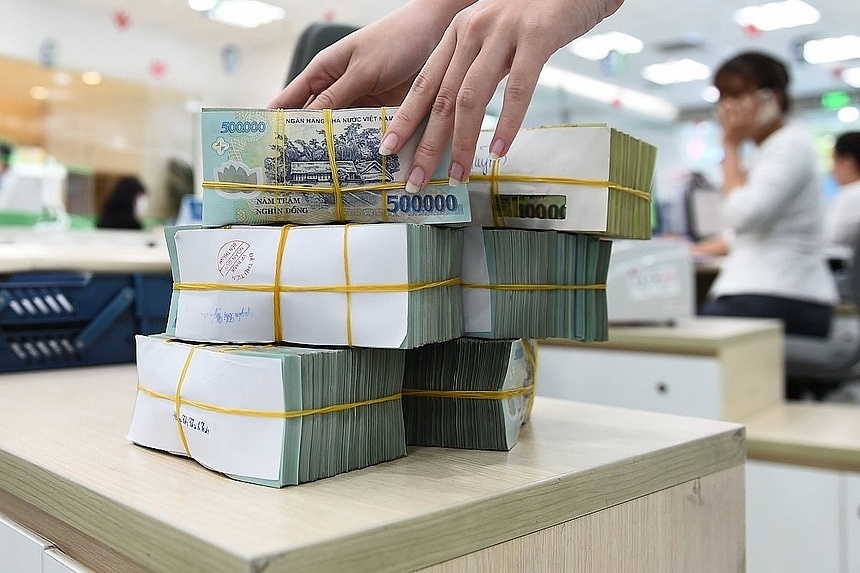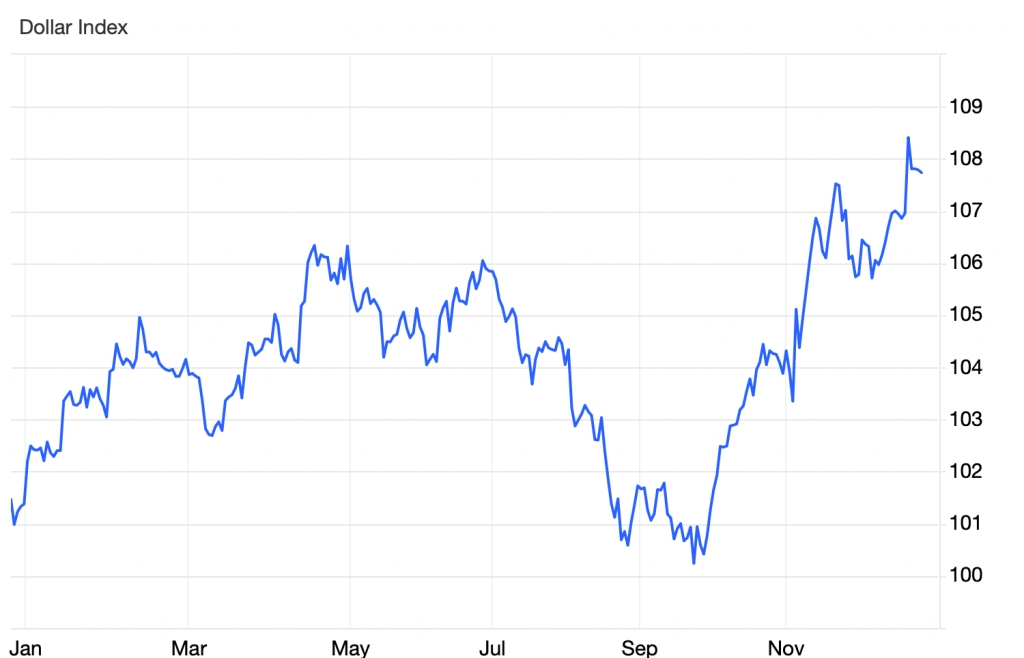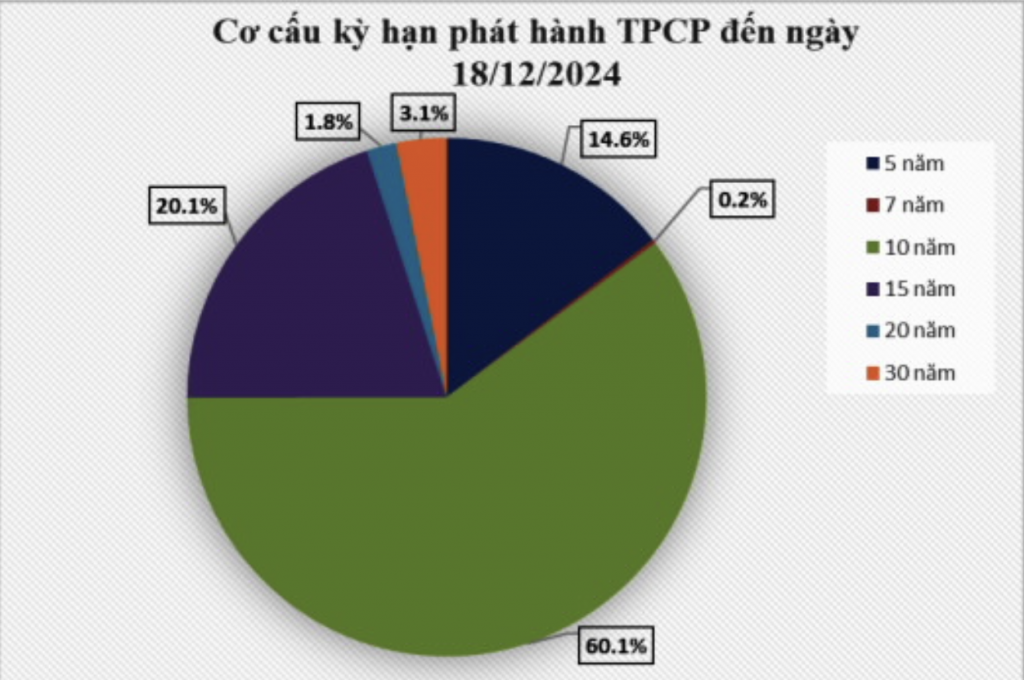Control public debt more effectively and safely
 |
| Limiting the mobilization of non-eligible ODA loans with high interest rates for balancing public investment. Source: Internet |
Public debt is at the rate of 61.4% of GDP
Under the drastic management of the Government, the work of management, mobilization and use of loans and payment of public debts, Government debt has achieved many positive results, closely followed the objectives and tasks of debt management in accordance with the Resolution No. 07/NQ-TƯ of the Politburo. The indicators of public debt, government debts were strictly controlled within the tolerance limit. It is expected that the public debt ratio would reach 61.4% of GDP (decreased by 63.7% of GDP at the end of 2016, the ceiling rate was set to not exceed more than 65%), the Government debt was at 52.1% of GDP (the ceiling rate was set to not exceed more than 54%). Initially, to restrain the increase of public debt from 18.4% per annum for the period 2011-2015 to a decrease of 10% per annum from 2016 to the present.
In addition, the legal framework of public debt is being improved. Recently, the Ministry of Finance has advised the Government to submit to the National Assembly the Law on Public Debt Management in 2017 in order to meet the requirements of debt management in the new situation. To ensure timely implementation as soon as the Law was valid from 1/7/2018, the Ministry of Finance submitted to the Government for issuance of guiding decrees, focusing on strict management of public debt limit; To intensify the management of the mobilization and use of public loans from the elaboration of strategies, plans and the supervision of the implementation; intensifying publicity and transparency; To take responsibilities for the efficient use of loans and payment of debts of the ministries, sectors and localities.
In particular, the restructuring of public debt and government debt should be carried out through various solutions, ensuring synchrony with the management of fiscal policies, monetary policies and developments in domestic and international capital markets. In the period 2016-2018, the Government's borrowing structure will continue to be implemented in the direction of gradually increasing the proportion of mobilizing domestic borrowing, gradually reducing dependence on foreign loans, especially in the context of Vietnam having become a middle-income country. Mobilizing domestic loans in the 2016-2018 periods met about 76% of the demand for capital mobilization of the Government. It is expected that by the end of 2018, the proportion of outstanding domestic loans of the Government will account for 60% and 40% of foreign debt (compared to 45% of domestic debt and 55% of foreign debt in 2015).
While keeping public debt safely and below the ceiling, but it still has to strengthen the mobilization, management, allocation and effective use of financial resources, promoting socio-economic development is also a set requirement of Resolution 07. Looking back on this task, it could be seen that for domestic loans, the concentration on capital mobilization through the issuance of Government bonds (VGBs) has contributed to promoting the development of the bond market, acting as the effective channel of mobilizing capital for the state budget. Specifically, the structure of VGBs with long terms from 10 to 30 years, is increasingly taking up a high proportion of the total volume of issued bonds annually (the period 2011-2015 is about 16%, the first 9 months of 2018 accounted for 86.4 %).
For the mobilization of foreign loans, the Ministry of Finance has consulted the Government to make full use of the remaining ODA capital in this period, focusing on the key projects. To limit the mobilization of non-eligible ODA loans with high interest rates for balancing public investment, mobilizing only for projects and programs capable of repaying capital under the mechanism of re-lending. The Law on Public Debt Management in 2017 stipulates the assignment of the Ministry of Finance to preside over calculating the grant element, evaluating the impact of public debt, determining the financial mechanism for the loan proposal. As from 2016, the Ministry of Finance reported to the Government to publicize the condition of loans of 6 major donors so that the ministries, sectors, localities and project owners can take the initiative in evaluating the process of making the money report. Also, ensuring the economic and financial efficiency of the proposal before reporting it to the competent level for decision on implementation of the project.
Do not use loans for recurrent expenditures
Although the management of public debt has achieved some positive results in recent years, according to Mr.Truong Hung Long, Director of the Debt Management and External Finance Department, public debt needed to remain tightly controlled. In the future, due to the balance of state budget, the pressure of mobilizing capital for development investment would be very high in order to achieve the target of fast and sustainable growth, especially the cost of foreign loans tends to increase due to Vietnam having become a middle-income country.
Besides that, in spite of the fact that debt ratios remain within the allowable limits, the proportion and growth rate of foreign debt of the Government and government guarantee debt has been reduced, according to a report by the State Bank of Vietnam, the foreign debt of enterprises in the form of self-borrowing skyrocketed in the years 2017 and 2018. This was the main reason leading to the indicators of foreign debt growth of the country increasing rapidly, approaching the safety threshold which was approved by the National Assembly. Although self-borrowed and self-repaying debts of enterprises and credit institutions were not in public debt, this was a component of the country's foreign debt and has caused an important influence on macroeconomic stability, national financial security. Under the directives of the Government, the State Bank of Vietnam is working with the Ministry of Finance to develop and implement measures to control foreign loans which are self-borrowing and self-repaying in order to ensure that the indicators are in the tolerance limit.
"So, in the future, we need to continue tight control of debt security indicators, improve the management of raising capital for the state budget and for development investment; carry out debt financing in the limit of annual plan which is approved by the competent authorities, strictly control the borrowing on re-lending and Government guarantee, " Mr.Long said.
According to the regulation, the public debt is used only for development investment, not used for recurrent expenditure. Therefore, the strengthening of management and improvement of the efficiency of the use of credit depended mainly on the efficiency of the formulation, planning and implementation of public investment programs and projects. Proposals for projects funded by ODA loans and foreign concessional loans must be included in the medium and long-term public investment plans, appropriate with the medium and long-term public debt plans and actual implementation schedule of the project.
Related News

Multiple drivers propel positive growth in budget revenue
10:33 | 05/12/2024 Finance

Strictly control public debt and ensure national financial security 2025
09:26 | 22/11/2024 Finance

Public investment spending up 1.8% in first 10 months of 2024
10:03 | 08/11/2024 Finance

Many "big enterprises" pay taxes after enforcement
09:00 | 05/11/2024 Anti-Smuggling
Latest News

SBV makes significant net withdrawal to stabilise exchange rate
07:59 | 15/01/2025 Finance

Việt Nam could maintain inflation between 3.5–4.5% in 2025: experts
06:19 | 11/01/2025 Finance

Banking industry to focus on bad debt handling targets in 2025
14:38 | 03/01/2025 Finance

State Bank sets higher credit growth target for 2025
15:22 | 31/12/2024 Finance
More News

Outlook for lending rates in 2025?
15:20 | 31/12/2024 Finance

Tax policies drive strong economic recovery and growth
07:55 | 31/12/2024 Finance

E-commerce tax collection estimated at VND 116 Trillion
07:54 | 31/12/2024 Finance

Big 4 banks estimate positive business results in 2024
13:49 | 30/12/2024 Finance

Flexible and proactive when exchange rates still fluctuate in 2025
11:03 | 30/12/2024 Finance

Issuing government bonds has met the budget capital at reasonable costs
14:25 | 29/12/2024 Finance

Bank stocks drive market gains as VN-Index closes final Friday of 2024 on a positive note
17:59 | 28/12/2024 Finance

Banks still "struggling" to find tools for handling bad debt
13:47 | 28/12/2024 Finance

Forecast upbeat for banking industry in 2025
14:30 | 27/12/2024 Finance
Your care

SBV makes significant net withdrawal to stabilise exchange rate
07:59 | 15/01/2025 Finance

Việt Nam could maintain inflation between 3.5–4.5% in 2025: experts
06:19 | 11/01/2025 Finance

Banking industry to focus on bad debt handling targets in 2025
14:38 | 03/01/2025 Finance

State Bank sets higher credit growth target for 2025
15:22 | 31/12/2024 Finance

Outlook for lending rates in 2025?
15:20 | 31/12/2024 Finance
